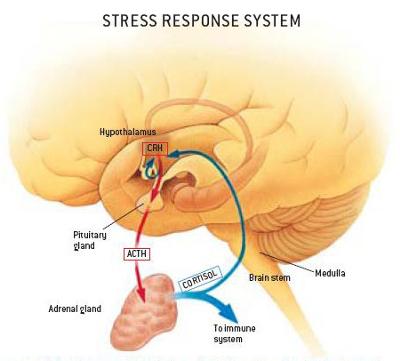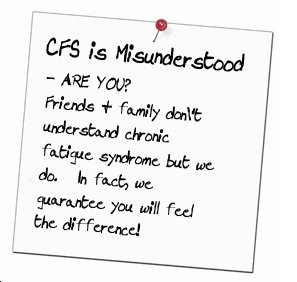Can 8-Minute Meditation Give You a Quiet Mind and Change Your Life Forever?
What exactly is meditation? It seems that so many people nowadays are hooked up with this form of activity. By definition, meditation is often used to describe the individual's state of intense attention on an object of awareness or thought. The individual tries to turn his or her attention inward. Meditation is said to be of Vedic Hinduism origin. This is usually practiced in the eastern religions but now even the western culture is already involved in such activity.
People want to practice meditation so that they can focus their mind to God for their personal development, to attain peace of mind, and to be healthier.
Many Americans are now involved in some form of meditation. According to Time Magazine there is one meditation practice that can be used by almost anyone. This can be considered as the basic primer of Americans wanting to begin meditation but have no idea where to start.
There was a book published last November 2005 authored by Victor Davich that is all about the 8 minute meditation. If you purchase the book and study it carefully, you will learn a lot of things about meditation, and you can do it in just 8 minutes.
Almost every individual who starts with anything new to him or her will often have lingering questions, hopes, and doubts about it. There are even people who hopes that when they begin to meditate, they will be enlightened. Or perhaps you're one of those individuals who think that meditation is just like an exercise or diet that you've been trying to do for the past few months. But these things are normal; so don’t be surprised if you're also like that.
The best thing to do is to face all the positive and/or negative expectations, and after doing so, forget about them and start with a clean slate. If you want to try the 8-minute program of meditation, you should learn how to approach it one minute at a time.
While many people think that meditation is a simple practice, then you'd better think twice. You might not notice it, but your mind is always racing from here to there. You can't concentrate. According to the book's author, you must watch your breath. This is the very first step to meditation. Do your inhalation and exhalation by breathing deeply. If you always do this and just keep on practicing, you can become good in meditation.
As a word of reminder, if you catch yourself thinking about other things, or in other words your mind strays off, focus again on your breathing. After all, meditation is all about concentrating and if you realize that you're not on the right track, you can always return to that state of mind gently.
Don’t get discouraged easily and just keep on practicing. There is a popular saying that says practice makes perfect; so always keep that in mind. If you quit easily, then you will remain a quitter.
Meditation can help you in achieving peace of mind. With all your problems at work, in your family, and the entire world, you should at least experience a few minutes of peace. Don’t miss this chance to attain personal development at no cost at all.
The Postures of Meditation: The Daily Guide to Success
During the ancient times until now, people practice meditation because of its provided advantages. Incorporating meditation as part of your daily life can make a big difference regarding your attitude and outlook in life. But because meditation is a procedure, it involves several steps as well as postures when doing it.
1. Cross legged posture. Various spiritual traditions and meditation teachers suggest or prescribe various meditation physical postures. One of the most popular postures is the cross legged position which includes the lotus position. It is taught in most meditative traditions that the spinal cord must be kept straight. So, slouching is not a good idea. This is because, when you sit straight, it encourages good circulation of what they call as spiritual energy, which is the life force and vital breath.
2. Seated posture. A meditator can sit on the chair with his or her bare feet, as what the New Thought is teaching. In Orthodox Christianity, a meditator can sit on the stool. While in Theravada Buddhism, a meditator is walking in mindfulness. In Sukhothai, Thailand, walking meditation of the monks is called bas-relief. The meditator sits up keeping his or her back straight holding the spine and head in alignment without leaning and thighs parallel to the floor. The hands are rested comfortably on the arm's chair or on the knees.
3. Kneeling posture. The meditator kneels with both knees on the floor keeping his or her buttocks resting on his or her toes and heels which are almost touching. The hands rest on his or his thighs.
4. Lying down posture also known as corpse posture or savasna in yoga. The meditator rests on the carpet keeping his or her legs straight and relaxed. Nevertheless, this is not used more often since it mimics the natural posture of sleeping. The meditator can sometimes fall asleep. This is effective in reducing stress rather than a meditation process.
5. Incorporating mudras or hand gestures. There is a theological meaning behind these gestures. Based on Yogic philosophy, these can affect consciousness. One example is the common hand-position of the Buddhist. The right hand rests on the top of the left hand with touching thumbs similar to the begging bowl of Buddha.
6. Incorporating various repetitive activities in stillness such as humming, chanting, or deep breathing to help in inducing a state of meditation. The Soto Zen practitioners do their meditation in front of a wall with open eyes. However, most mediation schools are assuming that the eyes are half-open or closed.
The duration and frequency of meditation also vary. There are nuns and monks who bow for a lifetime meditation. However, the broadly accepted duration is 20 or 30 minutes. This length may increase as the process goes on as what experienced meditators revealed. To obtain the benefits of meditation, it is advisable to follow the advices and instructions of the spiritual teacher.
Most traditions require daily practice. But some may experience frustration or guilt when they failed to do it. Sometimes, meditators may complain about meditators knee especially during long hours of kneeling on one's knees or sitting on cross legs.
Keep in mind that perseverance and acceptance are needed to become successful. This can help you during prolonged hours of meditation and increase focus on your everyday lives.
the A to Z directory of dealing with Health Problems & Self Care Strategies for natural remedies to your health issues.

Subscribe to get your weekly "Health Success Magazine" with a new complete & comprehensive Health Report in every edition!

to “Your Health Success”
our weekly F’R’E’E’ Newsletter
If you would like a free no-obligation private consultation or to contact Warren Tattersall for more information, please click here >> Contact Us

Click the books above to learn more about how we treat CFS naturally, to get your life back!
You will find many assorted Health Reports available for download free to you on this website!
Our free Health Success Reports are each available for you to download when you subscribe to receive them and their 7 part eCourse.
You can unsubscribe at any time, but we are sure you will want to receive all the email lessons of these informative ecourses.
Read more HERE to select the REPORT subjects of most interest (or concern) to you.









